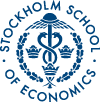No 1: Skill or Luck? Search Frictions and Wage Differentials
Tore Ellingsen () and Åsa Rosen
Additional contact information
Tore Ellingsen: Dept. of Economics, Stockholm School of Economics, Postal: Stockholm School of Economics, P.O. Box 6501, 113 83 Stockholm, Sweden
Abstract: The paper seeks to explain a collection of empirical regularities concerning inter- and intra-industrial wage differentials. For example, the model is consistent with the following well established set of observations: (i) After correcting for other variables, the wage of displaced workers is strongly related both to the characteristics of the original firm and the characteristics of the new firm, (ii) wage differentials are correlated across occupations, and (iii) the pattern of wage differentials are similar across countries with different market institutions. Our framework is a search- matching model with heterogeneous worker skills and endogenous wage policies (wage posting or bargaining). The model has equilibria in which firms post different wages. Higher wages attract more able workers on average. For a given posted wage, there may be an interval of worker productivities such that both the worker and the firm are satisfied with the match. Hence, a worker's wage reflects luck as well as skill. Even though the model predicts a correlation between industry characteristics and wage premia, the relationship can not be exploited by policy makers (the Lucas critique applies).
Keywords: Wage differentials; recruiting; adverse selection; search models
28 pages, January 1994
Full text files
hastef0001.ps PostScript file
hastef0001.ps.zip PostScript file
hastef0001.pdf
hastef0001.pdf.zip
Questions (including download problems) about the papers in this series should be directed to Helena Lundin ()
Report other problems with accessing this service to Sune Karlsson ().
RePEc:hhs:hastef:0001This page generated on 2024-09-13 22:19:40.

